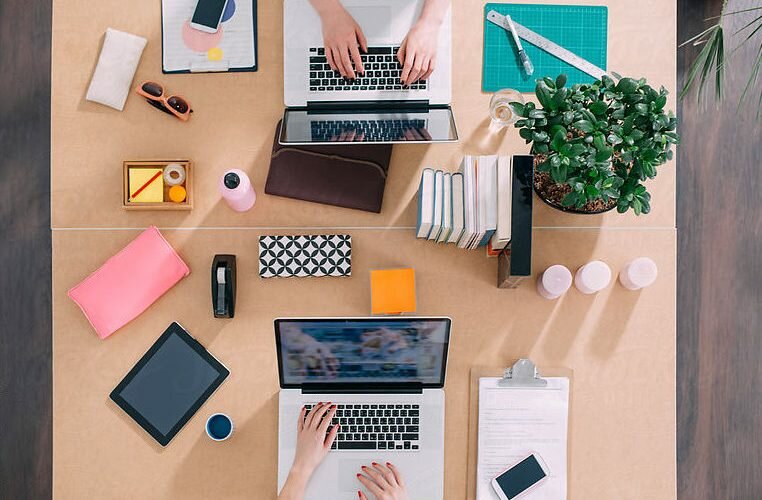On a mission to change the way we work in Australia, Olly Bridge originally came from a Sports & Exercise Science degree specializing in Exercise Physioogy. He worked with some of the top names in Formula One as well as the British Olympic Gymnastic Team.
It was after moving into the corporate sector and working in Sales and Marketing for BMW that Olly became concerned by the poor general health of the average corporate worker. Realizing there was a critical need for global change, it was only a matter of time before he started to do all he could to empower people to regain control of their own health.
This is where he became a Director of the Global Corporate Challenge and helped ‘move’ 1.5 million people into better health.
Now, as Head of Corporate Health & Wellbeing at Medibank, Olly merges his passion and knowledge of Exercise Science with his personal experience of a demanding corporate career – placing him perfectly to make a real difference to people’s lives.
Olly gives us some very insightful tips as we chat to him about the importance of Wellness programs in the Workplace.
Let’s start with, what impact do you believe has our current culture of working long hours had on our wellbeing?
There has been much written, on long working hours and the impact it has on our physical, psychological and psychosocial wellbeing. Much focus on the negative impact, but I’m resolute that the workplace can, and should, be a positive influence on people’s wellbeing. Workplaces should endeavour to send their people to home BETTER than they arrived. I’ve had the pleasure of working at Medibank Place in the Docklands for the past 3 years and I can honestly say I’ve never seen such a positive health culture where colleagues really live the ‘For Better Health’ purpose.
How has the conversation around health and wellbeing within the workplace changed in the last 3 years?
The majority of my conversations with progressive organisations are now around the ‘whole’ employee, rather than just one aspect of health. Enabling and encouraging employees to ‘bring their whole self to work’ is unlocking the real potential for many forward thinking organisations. It’s all about building that authentic culture of health.
What is the future of workplace wellbeing?
I think the future is all about ‘different things for different people’. Even ‘different things for the same people just at different stages of their lives’.
What I mean by this is that what I looked for, or valued, before I had kids is different to what I look for and value now! So I’m the same person, but just with different needs. Large workforces will have diverse requirements – a one size fits all program is just a thing of the past. Organisations need to trust and involve their people by creating community. Social media channels like Yammer make it super easy to involve people in the discussion and really have a mature dialogue around what your people value.
I also don’t think that organisations have to ‘pay’ for everything. Ensuring that the healthy option is the easy option (even if it costs the organization to do so) I believe is where budgets should be spent. Creating an ecosystem and culture that facilitates and encourages the right health behaviours is far more important than paying for an entry to some fun run!
Can you share with our readers 3 simplistic changes employers can implement to create a healthier culture within the workplace?
- Genuine and authentic senior leadership ‘buy in’ is imperative. Ensure that any change or initiative is endorsed and championed by someone from the C-Suite. Without this, it’s often like moving the deckchairs on the Titanic.
- Involve employees across the organisation at every stage, from concepts and design through to implementation and evaluation
- Ensure that evaluation and feedback are completed for everything. If employees suggest something and it didn’t get approved, it’s imperative that it is communicated as to why it didn’t make the cut. When something is rolled out, communicate the impact through stories rather than just data points. Connect with people’s hearts and make heroes of the people that are doing the right things. Make it go viral at every opportunity!
What is the role of the employer in improving the way we work?
As mentioned before, rather than being the ‘wallet’, the employer should be the concierge, linking the right employee to the right program/service and facilitating the adherence.
In your experience what is the relationship between workplace well-being and productivity?
There is irrefutable evidence that healthy employees are more productive employees, in fact, Medibank published research over a decade ago that demonstrated that healthy employees were nearly three times more productive than unhealthy employees. More recently in 2014 Towers Watson demonstrated that organisations with effective health and wellbeing programs are almost 80% more likely to record significantly higher financial performance than competitors who don’t and the Workplace Health Association of Australia quote a 2.5 times increase in financial performance in organisations with well-managed workplace health programs.
I could go on, as there is a plethora of research that proves this, but that doesn’t mean it is easy. If it was, we wouldn’t have the alarming health statistics that we do. The important message is that it is worth the effort and it is worth the time and it most certainly is worth having it as an agenda item at the board meeting.
In fact, it was this last point, about getting workplace wellbeing onto the Board meeting agenda, that motivated Medibank to work with Deloitte on the Wellbeing@Work Index (W@WI). The Index makes it super easy for HR directors to report to the board on:
- How their workplace impacts the wellbeing of their employees
- Identify gaps and opportunities to improve their wellbeing strategy
- Benchmark their organisation’s wellbeing against other organisations
- Monitor their organisation’s progress and return on wellbeing investment.
The W@WI makes it so much easier to keep workplace wellbeing on the agenda.
What are some of the less known benefits of a Workplace Wellbeing programme?
With enabling the employee to bring their ‘whole self’ to work there is not only a huge health benefit but also a huge divergent thinking advantage. With the amount of disruption in business now, the more diverse thinking and new ideas the better and if people feel ‘safe’, ‘healthy’ and ‘well’ there is nothing standing in the way of this flow of diverse ideas.
Plus it’s just nicer to work in a place that is accepting. IBM and Globoforce in 2016 showed that employees with more positive experiences at work are almost twice as likely to report higher discretionary effort, while Virgin Pulse in 2013 claimed that 87% of potential employees highlighted that health and wellbeing programs play an important role in determining their employer of choice.
The role does technology play in the future of workplaces is…
Technology will continue to play a role in workplace well-being and as a self-confessed ‘health gadget geek’, it will be great for me J
However, in all honesty, it will always be just playing at the fringes unless you get the culture right. Peter Drucker famously said that culture eats strategy for breakfast, and I think technology is also devoured by culture. For example, you can have the best technology in the world to report back to you about all aspects of your employees’ health, but if you need a culture of trust and collaboration for your employees to grant you access to that all important data.
Nudge theory has had a lot of interest over the last few years and so the use of technology to communicate the perfect health message at the perfect time is very exciting. Technology should enable us to meet our employees where they are on their health journeys, rather than making them come to where we need them to be to receive our message.
Imagine this example, beacon technology picks up that I have entered the line up at the coffee shop at work and because I use my phone to pay for everything the system knows what I’ve bought over the last 2 months. My phone can then issue a money off voucher for something similar to what I usually order, but one that is far healthier! If I choose this option, not only do I get money from the healthy option today, but I also gain some health points and can earn more money off healthy options in the future. These points are then also used to show me on a personal leaderboard that I’ve set up with my friends and people can see and congratulate me for taking the healthy option…nudging them to do the same!
I’m excited about what the future will hold!






